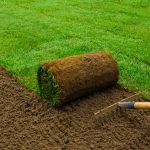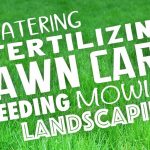Have you ever wondered how beautiful landscapes maintain their vibrant colors and healthy plants? The secret lies in the use of mulch!
Mulch not only enhances the aesthetic appeal of your garden but also offers numerous benefits to your plants and soil. But with so many mulch options available, how do you choose the right one for your landscaping needs?
Worry not, as I’ve got you covered with this comprehensive guide on the best mulch for landscaping.
In this guide, we’ll delve into organic and inorganic mulching options, discuss their benefits and drawbacks, and offer practical tips for various landscaping scenarios. By the end of this journey, you’ll have all the knowledge you need to select the perfect mulch for your garden and create the stunning landscape of your dreams.
Short Summary
- Understanding mulch and selecting the right one for your landscaping goals is important, with organic options contributing to soil fertility and inorganic ones requiring less maintenance.
- Consider climate adaptation, garden layout & plant types, and environmental impact when choosing a mulch that best suits your vision.
- Popular organic & inorganic options are available. Use practical tips for specific scenarios such as vegetable gardens or fire-prone regions.
Understanding Mulch: Organic vs. Inorganic
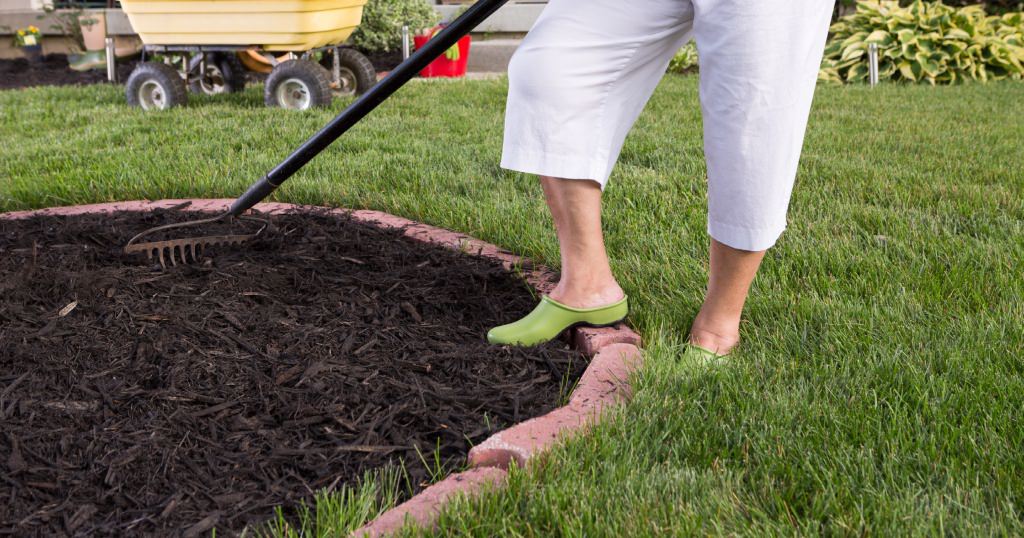
Mulch is a protective layer of organic or inorganic material applied to the soil surface, offering a myriad of benefits such as regulating soil temperature, retaining moisture, and inhibiting weed growth. In a nutshell, organic mulches are made from natural materials that decompose over time, while inorganic mulches are synthetic materials that do not decompose.
But which one should you choose for your garden? The choice between organic and inorganic mulch largely depends on your landscaping goals and personal preferences. Organic mulches are perfect for enhancing soil fertility and supplying nutrients to plants. On the other hand, organic mulches offer a longer lifespan and require less maintenance, but do not contribute to soil improvement.
Let’s dive deeper into the world of organic and inorganic mulches to help you make an informed decision.
Organic Mulch
Organic mulch is made from natural materials that decompose over time, such as leaves, pine needles, and compost. This decomposition process enriches the soil with organic matter and nutrients, resulting in improved soil texture and quality. Some common organic mulch options include living mulch, pine needle mulch, garden waste mulch, straw mulch, leaf mold, and bark chips.
When using organic mulch, it’s essential to be cautious about its application. Piling the mulch too close to plants can inhibit their roots, leading to their eventual demise. Instead, ensure that the mulch is applied evenly and not too thick, allowing plant roots to breathe and preventing the growth of weeds.
Inorganic Mulch
Inorganic mulch, on the other hand, is composed of synthetic materials that do not decompose or decompose very slowly. Some popular inorganic mulch options include crushed shells, rubber mulch, landscape fabrics, and plastic sheeting. These mulches are known for their durability, providing an effective weed barrier and requiring little to no maintenance.
However, organic mulches have their drawbacks too. Landscaping fabric and plastic mulch can potentially smother your plants if applied too close to their roots. Therefore, it’s crucial to exercise caution when applying inorganic mulches to your garden beds, ensuring that they provide the desired benefits without harming your plants.
Factors to Consider When Choosing Mulch for Landscaping
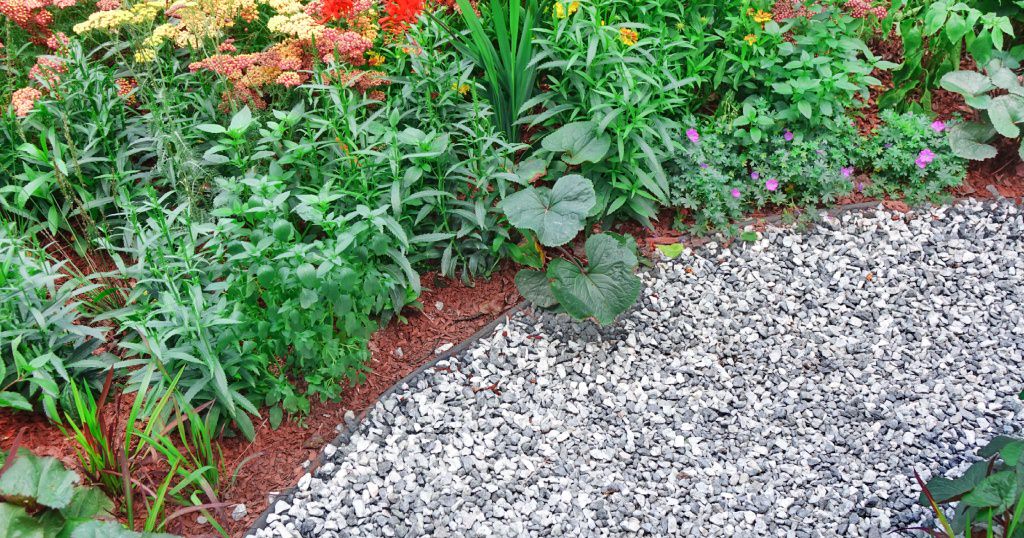
Aside from the type of mulch, there are several factors to consider when selecting the perfect mulch for your landscaping needs. These factors include climate adaptation, garden layout and plant types, and environmental impact. By considering these factors, you can make an informed decision and choose a mulch that complements your landscaping vision and provides the desired benefits to your garden.
Let’s explore these factors in detail, starting with climate adaptation. Understanding how your choice of mulch interacts with your local climate can significantly impact the health and appearance of your garden.
Next, we’ll discuss garden layout and plant types, helping you choose a mulch that enhances the aesthetic appeal and functionality of your garden.
Finally, we’ll touch upon the environmental impact of different mulch types, guiding you toward a more sustainable and eco-friendly choice.
Climate Adaptation
Selecting the right mulch based on your local climate plays a crucial role in the health and appearance of your garden. For instance, wood chips are an excellent mulch option for stormy climates, as they provide stability and prevent soil erosion.
On the other hand, in colder regions, mulch acts as insulation, protecting plant roots and preventing frost heaving caused by repeated freezing and thawing.
When choosing mulch for climate adaptation, it’s essential to consider the specific needs of your plants and the weather conditions they thrive in. This will ensure that your choice of mulch not only looks great but also provides the necessary protection and support for your plants to flourish, regardless of the climate.
Garden Layout and Plant Types
The size, shape, and plant types in your garden can also influence your choice of mulch. Different mulches work better for different types of plants and garden designs. For instance, vegetable gardens can benefit from organic mulches like straw, grass clippings, or compost, as they break down over time and provide essential nutrients to the soil.
When selecting the mulch for your garden, consider how it will impact the overall appearance and functionality of your landscaping space. By choosing a mulch that complements your garden layout and plant types, you can create a cohesive and visually appealing landscape that meets your specific needs and preferences.
Environmental Impact
The environmental impact of your chosen mulch is another important factor to consider. Organic mulches, for instance, can improve soil quality and reduce erosion, making them an environmentally friendly choice. However, plastic and rubber mulches may leach toxic chemicals into the soil and groundwater, posing potential risks to plants and the environment.
When selecting mulch for its environmental impact, it’s essential to weigh the benefits and drawbacks of each type and choose one that aligns with your values and goals for sustainable gardening. By doing so, you can create a beautiful landscape while also minimizing your impact on the environment.
Top Organic Mulch Options for Landscaping
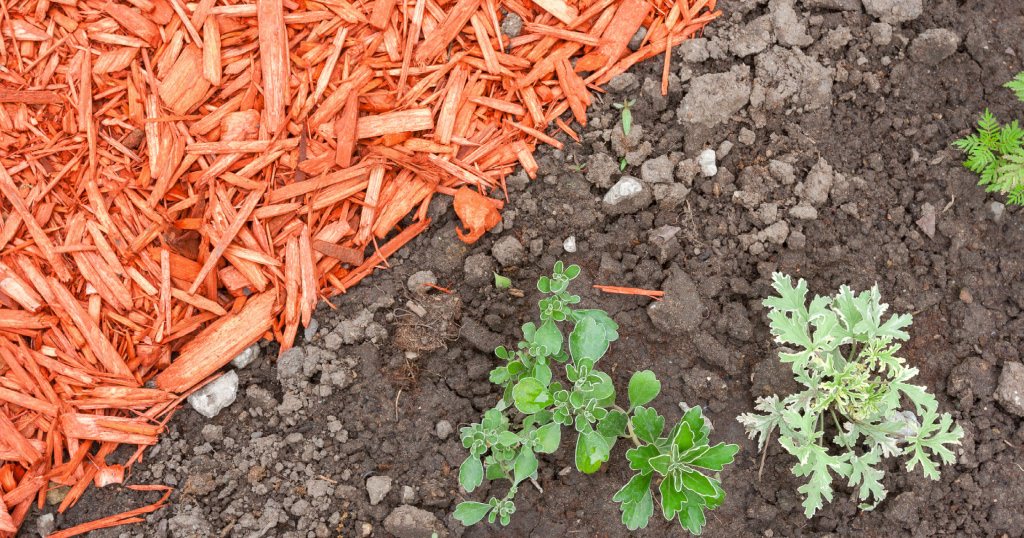
Now that we’ve explored the factors to consider when choosing mulch, let’s delve into some of the best organic mulch options available for landscaping. Organic mulches not only provide essential nutrients to your soil, but also help retain moisture, suppress weeds, and regulate soil temperature. Some popular organic mulch options include shredded bark and wood chips, compost and manure, and leaves and straw.
Each of these organic mulch options offers unique benefits, making them ideal for a variety of landscaping needs. Let’s take a closer look at these top organic mulch options and how they can transform your garden into a thriving, sustainable oasis.
Shredded Bark and Wood Chips
Shredded bark and wood chips are popular organic mulch choices due to their long-lasting properties and ability to retain moisture in the soil. This type of mulch is ideal for slopes and garden beds, as it breaks down slowly, providing stability and preventing soil erosion.
Moreover, some varieties of shredded bark mulch, such as pine or cedar bark chips, are sourced from other industries, making them an eco-friendly option.
When using shredded bark and wood chips, it’s essential to spread them evenly and avoid piling them too close to plants, as this can inhibit root growth and harm your plants.
Compost and Manure
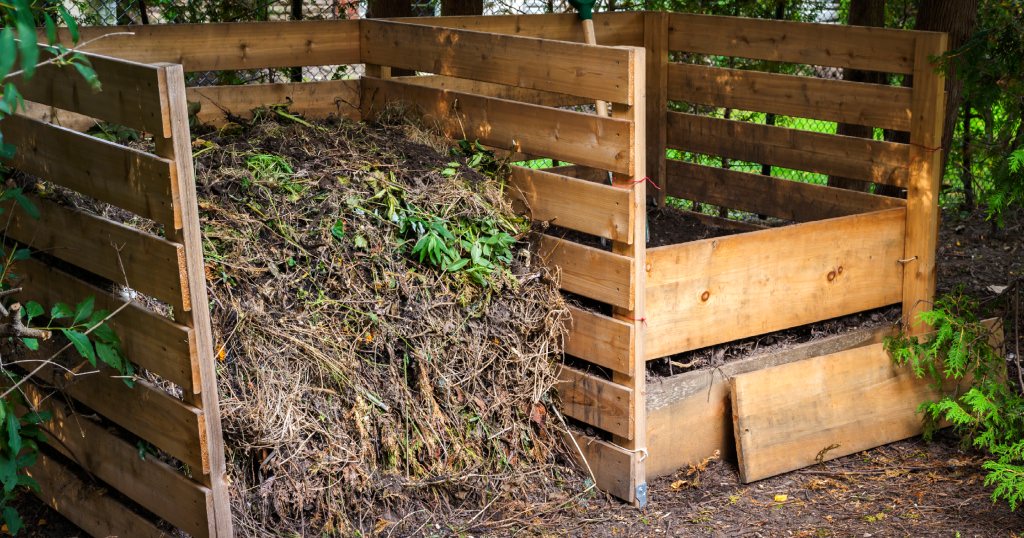
Compost and manure mulches are excellent options for providing essential nutrients to your soil and promoting healthy plant growth. These types of mulches can be easily made at home by composting organic materials such as food scraps, grass clippings, and leaves.
Before applying compost or manure mulch to your garden beds, it’s essential to test the compost in a small area to ensure that no weed seeds are present. This will prevent unwanted weeds from taking over your garden and interfering with the growth of your desired plants.
Once you’ve determined that your compost is weed-free, you can apply it to your garden beds to enhance soil fertility, reduce weed growth, and promote healthy plant growth.
Leaves and Straw
Leaves and pine straw are another excellent organic mulch option, offering numerous benefits such as water conservation, soil structure and drainage improvement, and protection for delicate fruits. These mulches are particularly beneficial for vegetable gardens, as they provide essential nutrients and create a natural, sustainable environment for your plants to thrive.
Before using leaves and pine straw as mulch, it’s essential to ensure that they are free of weed seeds and pests that could harm your plants. Additionally, avoid using wet or diseased leaves, as they can spread diseases to your plants and hinder their growth.
By following these simple tips, you can effectively use leaves and straw as mulch in your garden and enjoy the many benefits they provide.
Top Inorganic Mulch Options for Landscaping
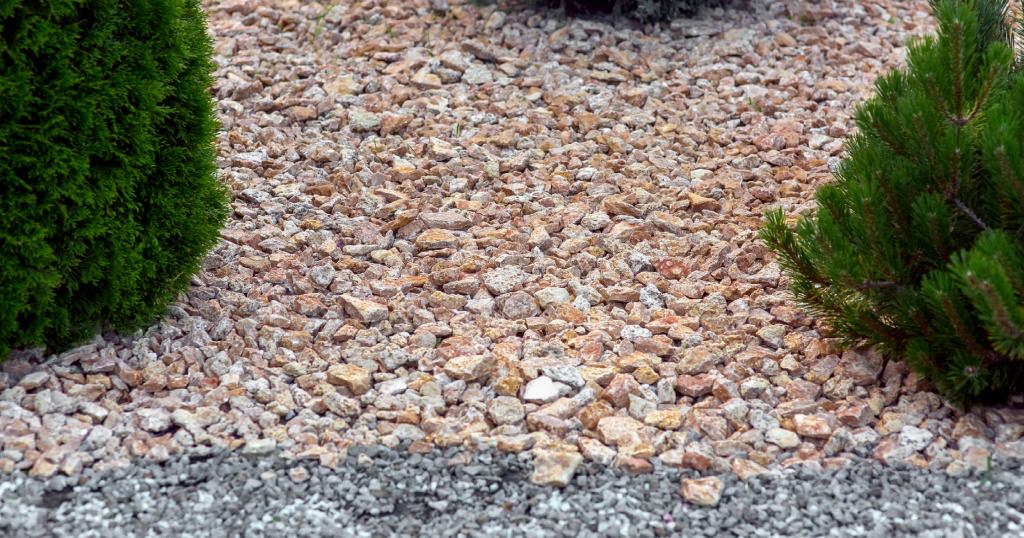
If you’re looking for a low-maintenance, long-lasting mulch option, inorganic mulches may be the perfect solution for your landscaping needs. Inorganic mulches do not decompose, eliminating the need for annual reapplication and reducing maintenance efforts. Some popular inorganic mulch options include stone and gravel, rubber and synthetic mulches, landscape fabrics, and plastic sheeting.
While organic mulches do not provide the same soil-enhancing benefits as organic mulches, they can still play a valuable role in your landscaping efforts. Let’s explore the top inorganic mulch options and how they can be incorporated into your garden design.
Stone and Gravel
Stone and gravel are popular inorganic mulch options that can be used to create beautiful pathways, driveways, and decorative accents in your garden. These types of mulches are not only attractive but also provide effective weed control and require minimal maintenance.
However, stone and gravel mulches can also be challenging to install and may require additional upkeep compared to other mulch types. Additionally, they do not effectively retain water and can be challenging to remove without replacing the topsoil. For these reasons, it’s essential to carefully consider your landscaping needs and preferences before opting for stone and gravel mulches.
Rubber and Synthetic Mulches
Rubber and synthetic mulches are another inorganic mulch option that offers durability and effective weed control. These mulches are made from recycled rubber or other synthetic materials, making them an eco-friendly choice for your garden. However, they do not provide any nutrients to the soil and can potentially disrupt the soil’s delicate balance.
Additionally, rubber and synthetic mulches can leach heavy metals and toxic chemicals into the soil and groundwater, posing potential risks to plants and the environment. Therefore, it’s essential to weigh the pros and cons of these mulch types before incorporating them into your garden design.
Landscape Fabrics and Plastic Sheeting
Landscape fabrics and plastic sheeting are inorganic mulch options that can be used to prevent weed growth and separate the substrate from the soil. These materials provide an effective weed barrier, reducing the need for manual weeding and maintenance.
However, landscape fabrics and plastic sheeting can potentially smother your plants if applied too close to their roots. To avoid this issue, exercise caution when applying these mulches to your garden beds, ensuring that you provide adequate space for your plants to grow and thrive.
Mulching Tips for Specific Landscaping Scenarios

Now that we’ve explored the top organic and inorganic mulch options available for landscaping, let’s discuss some practical mulching tips for specific landscaping scenarios. From vegetable gardens to kids’ play areas and fire-prone regions, selecting the right mulch can make all the difference in the health, safety, and appearance of your landscaping project.
In the following sections, we’ll provide practical tips and recommendations for choosing the best mulch for various landscaping scenarios, helping you make the most of your garden and create a stunning, functional outdoor space.
Vegetable Gardens
For vegetable gardens, organic mulch options such as compost and straw are highly recommended. These mulches not only provide essential nutrients to the soil, but also help maintain moisture, suppress weeds, and regulate soil temperature, ensuring a healthy and productive vegetable garden.
Before applying compost or straw mulch to your vegetable garden beds, test the compost in a small area to ensure that no weed seeds are present. This will prevent unwanted weeds from taking over your garden and interfering with the growth of your desired plants.
Once you’ve determined that your compost is weed-free, you can apply it to your garden beds to enhance soil fertility, reduce weed growth, and promote healthy plant growth.
Kids’ Play Areas
When it comes to kids’ play areas, safety and durability are the top priorities. Wood chips are an excellent mulch option for these spaces, providing a soft, cushioned surface that helps absorb the impact of falls. To ensure maximum safety, a depth of 8-12 inches of wood chips is recommended for play areas.
Other acceptable playground surface materials include shredded/recycled rubber, sand, and pea gravel. However, it’s crucial to consider the potential environmental impact of rubber mulch, as it can leach toxic chemicals into the soil and groundwater.
By choosing a safe, durable, and eco-friendly mulch option for your kids’ play area, you can create a fun and secure space for them to enjoy.
Fire-Prone Regions
In fire-prone regions, selecting the right mulch is crucial for the safety of your garden and property. Wood mulch is an excellent choice for these areas, as it is less likely to ignite and spread fire than rubber, plastic, or exposed landscaping fabric mulches.
Additionally, rock, composted, or heavy bark mulch, flower beds, and gardens can be employed as effective firebreaks in fire-prone regions. By choosing a fire-resistant mulch and strategically placing it in your garden, you can mitigate the risk of wildfires and help protect your property and the surrounding environment.
Summary
In conclusion, choosing the right mulch for your landscaping needs can make all the difference in the health, appearance, and functionality of your garden. By considering factors such as climate adaptation, garden layout and plant types, and environmental impact, you can select the perfect mulch that complements your landscaping vision and provides the desired benefits to your garden.
Whether you opt for organic or inorganic mulch options, be sure to weigh the pros and cons of each type and follow practical mulching tips for specific landscaping scenarios. With the right mulch in place, you can create a stunning, healthy, and sustainable garden that will thrive for years to come.
Frequently Asked Questions
What kind of mulch is best for landscaping?
For the best landscaping results, choose either dyed wood or rubber mulch. Both of these materials improve the aesthetic of a landscape and will last for multiple seasons.
Landscape fabric and stone are also effective and long-lasting choices that may be better suited to certain applications.
What is the best mulch to keep weeds away?
For effective weed suppression, bark mulch is the optimal choice. Its thick layer creates an impenetrable barrier for weed seeds to reach the soil and subsequently limit their access to sunlight – essential for weed growth. This makes it an ideal material for long-term prevention of weeds.
What is the best mulch to prevent weeds and bugs?
Organic mulch is the best choice for preventing weeds and bugs as it provides a natural insect repellent that does not harm the environment. It is also beneficial in retaining moisture and keeping your plants healthy.
Organic mulches such as grass clippings, straws, wood chips, and bark make great choices.
What is the best kind of mulch to use in flower beds?
For flower beds, the best kind of mulch to use is aged hardwood mulch. This type of mulch adds nutrients to the soil as it decomposes and does not add too much acidity like softwood mulch can.
Its slow decomposition makes it ideal for supporting long-term flower bed health.
What is mulch for gardening?
Mulch is a vital part of gardening, providing many benefits including improved soil fertility and moisture, weed prevention, and temperature moderation.
Using the right type of mulch for your specific needs will help keep your plants healthy and thriving.
I hope this guide answers your questions about the most popular types of mulch, and helped you make a good choice for your backyard. Every part of the US is different, so feel free to comment below or ask for help at a local garden center near you for the best results.

